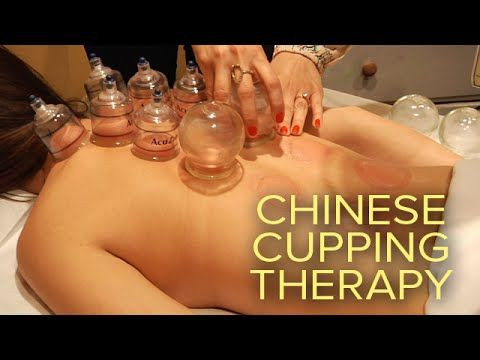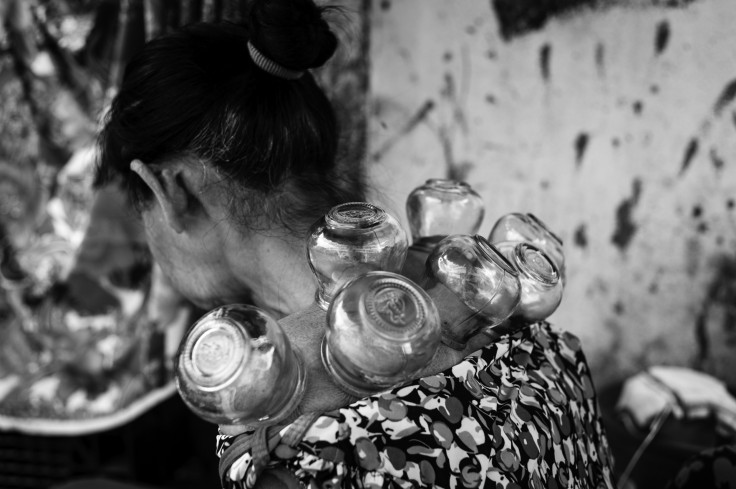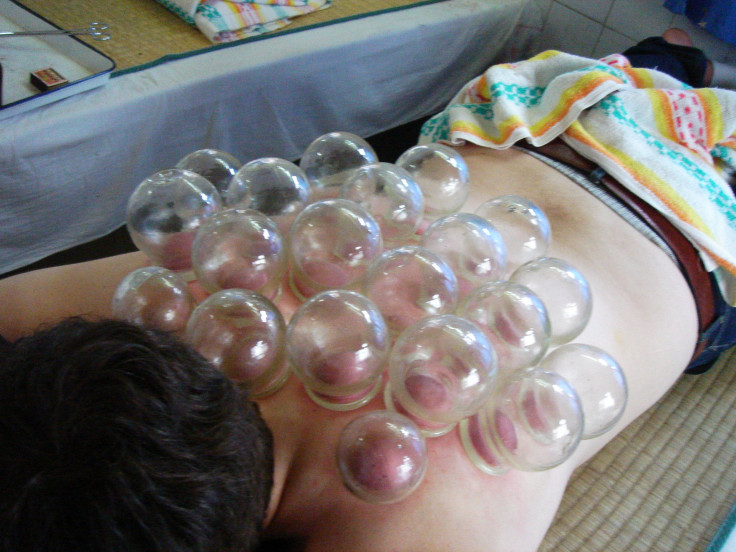What Are All Those Red Spots? Traditional Chinese Cupping Therapy Provides Pain Relief And Reduces Muscle Aches

Cupping is an ancient therapeutic practice that has been used in traditional Chinese medicine for over 2,500 years. In the early days, healers originally used cattle horns or pieces of bamboo as cups that were boiled in water or lit on fire to expel oxygen and suck the skin, according to the Academy of Classical Oriental Sciences. By the 1950s, the clinical development of cupping as an alternative pain therapy increased rapidly, as it became a more respected practice in the field of medicine.

Today, traditional cupping uses fire and is performed by acupuncturists or massage therapists who typically heat the air inside a glass cup by lighting cotton swabs on fire before quickly applying it to the skin on a person’s back. The cup may be left in place for several minutes until it’s removed, often leaving behind a bright red, circular welt. Another form of the practice is wet cupping that involves a needle prick in the skin before the cup is placed down over the area of treatment.

Cupping promotes localized pressure into an area of the body by creating a suction cup, which draws the skin up under the cup. As the skin gets vacuumed up by the fire, it causes fresh blood to rush into the area and ultimately improve circulation. The practice is most commonly used for aches, pain, muscular discomfort, and respiratory problems. According to the Mayo Clinic, when cupping is combined with acupuncture, it may even reduce the muscle pain and tenderness symptoms caused by fibromyalgia more effectively than medication.
Published by Medicaldaily.com



























